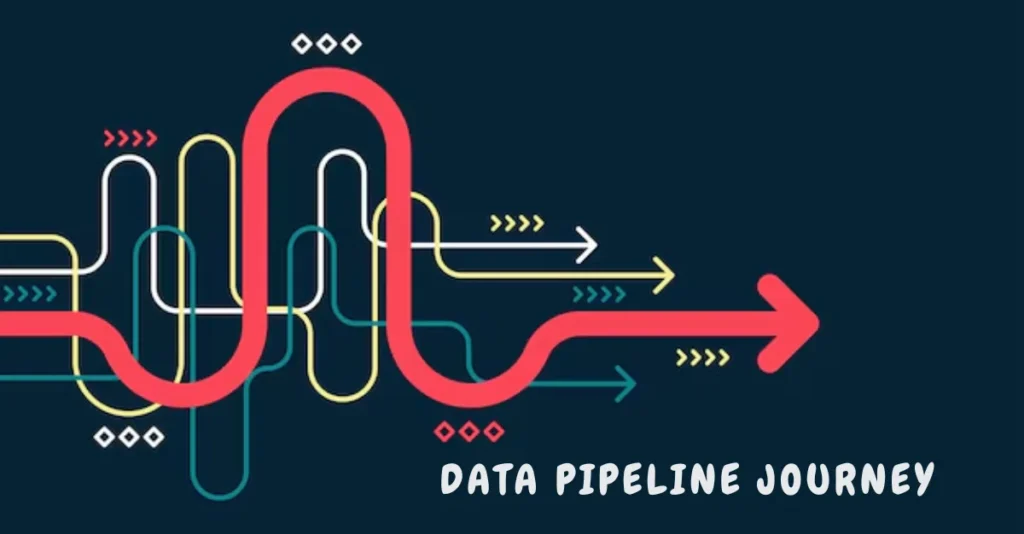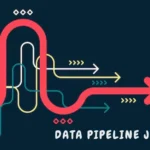Introduction
In today’s data-driven world, every decision hinges on the ability to harness insights from vast amounts of information. Mastering the data pipeline journey is crucial for businesses looking to thrive in this competitive landscape. From gathering raw data to transforming it into actionable insights, each step plays a vital role in shaping strategies and driving success.
Imagine having access to real-time analytics that can inform your marketing campaigns or streamline operations. The potential is limitless when you unlock the true power of your data pipeline. But how do you navigate this intricate process? Let’s dive deep into understanding each stage of the journey, highlighting its importance and revealing effective practices that will enhance your business growth through informed decision-making.
The Importance of Proper Data Collection
Proper data collection is the cornerstone of any successful data pipeline journey. Without accurate and reliable data, insights become meaningless.
Every decision made based on flawed information can lead to misguided strategies. Businesses risk wasting resources and time chasing after outcomes that don’t align with reality.
Choosing the right sources is crucial. Whether it’s customer feedback, sales figures, or website analytics, each type needs careful consideration.
Moreover, standardizing how data is collected ensures consistency across various platforms. It simplifies subsequent analysis and helps in maintaining a unified view of your operations.
Investing time in training staff on effective collection methods also pays off significantly. A well-informed team enhances accuracy while reducing human error during this initial phase.
Thorough data collection lays a solid foundation for every step that follows in transforming raw numbers into actionable insights.
Cleaning and Preparing Data for Analysis
Cleaning and preparing data is a crucial step in the data pipeline journey. Raw data often comes with inaccuracies, inconsistencies, and missing values that can skew results.
Start by identifying duplicates. They can distort analysis and lead to misleading insights. Removing these ensures your dataset reflects true scenarios.
Next, handle missing values thoughtfully. You might choose to fill them in based on averages or drop affected records entirely, depending on their significance.
Transformations are essential too. Standardizing formats for dates or categorical variables makes it easier to analyze trends accurately.
Don’t overlook outliers either; they can mask genuine patterns within your data. Use visualization tools to pinpoint anomalies before deciding how to address them.
This meticulous process lays the groundwork for effective analysis and reliable decision-making down the line. Investing time here pays off when extracting meaningful insights later on.
Tools and Technologies for Managing the Data Pipeline
The right tools and technologies can transform your data pipeline journey into a seamless operation. From collection to analysis, each stage demands specific solutions tailored to meet unique needs.
Data integration platforms like Apache NiFi or Talend excel in streamlining the flow of information. They make it easier to gather disparate data sources into one cohesive unit.
For storage, cloud-based options such as Amazon S3 or Google Cloud Storage offer scalability and reliability. Your data remains accessible while providing robust security features.
When it comes to processing, frameworks like Apache Spark stand out for their speed and efficiency. They allow you to conduct complex analyses without overwhelming system resources.
Visualization tools like Tableau or Power BI help convert raw numbers into compelling stories. This makes understanding trends and patterns far simpler for decision-makers across your organization.
Extracting Valuable Insights from Data
Extracting valuable insights from data is where the magic happens. It transforms raw information into actionable knowledge that drives decision-making.
Begin by employing analytical techniques, such as statistical analysis and machine learning algorithms. These methods help reveal hidden patterns and trends that may not be immediately apparent.
Visualization tools play a crucial role too. Charts, graphs, and dashboards can make complex data more digestible, allowing stakeholders to grasp insights quickly.
Engage with your findings by asking critical questions. What story does the data tell? How do these insights align with business goals?
Collaboration across teams further enriches this process. Diverse perspectives often unearth new interpretations and possibilities for action.
Extracting insights isn’t just about numbers; it’s about understanding what they mean within your context. That’s how you bridge the gap between mere data points and strategic initiatives that propel growth.
Implementing Actionable Strategies Based on Data Findings
Implementing actionable strategies requires a keen understanding of the insights derived from data. Once you’ve analyzed your findings, it’s time to pivot toward practical application.
Start by prioritizing insights that align with your business goals. Focus on the most impactful areas where changes can lead to significant improvements.
Involve cross-functional teams in discussions about these insights. Collaboration fosters creativity and ensures that diverse perspectives shape strategic initiatives.
Next, design clear action plans based on identified opportunities. Set measurable objectives to track progress effectively.
Don’t forget to communicate changes transparently throughout the organization. This builds buy-in and encourages engagement at all levels.
Establish feedback loops for continuous improvement. Regularly revisit your strategies as new data emerges and adapt accordingly to maintain relevance in an ever-evolving landscape.
The Impact of a Successful Data Pipeline on Business Growth
A successful data pipeline transforms raw information into a strategic asset. It enables businesses to make informed decisions swiftly, propelling growth and innovation.
When organizations harness the power of data effectively, they can identify trends and predict market shifts with remarkable accuracy. This agility allows them to stay one step ahead of competitors.
Moreover, streamlined data processes foster collaboration among teams. With reliable insights at their fingertips, departments work in harmony towards shared goals.
Investing in a robust data pipeline also enhances customer experiences. Businesses can tailor offerings based on real-time feedback and preferences, leading to improved satisfaction rates.
An efficient data pipeline doesn’t just support operations; it becomes a catalyst for scaling initiatives and driving long-term success across various sectors.
Common Challenges in the Data Pipeline Journey and How to Overcome Them
Data pipelines can be complex. As organizations grow, they often encounter hurdles along the way.
One common challenge is data silos. Different departments may use separate systems that don’t communicate effectively. This fragmentation limits insights and slows down decision-making.
Another issue is data quality. Inaccurate or outdated information can lead to flawed analyses and misguided strategies. Regular audits and validation checks are essential in maintaining high-quality data.
Scalability also poses a significant problem for many businesses. As more data flows in, existing infrastructure might struggle to keep up, resulting in bottlenecks.
Talent gaps can hinder progress. Skilled professionals who understand the intricacies of managing a data pipeline are invaluable yet hard to find.
Addressing these challenges requires strategic planning and investment in both technology and training resources.
Best Practices for Maintaining an Efficient and Effective Data
To maintain an efficient and effective data pipeline, consistency is key. Regular audits of your data processes help identify bottlenecks or redundancies that can slow down performance.
Investing in automation tools can significantly streamline workflows. Automated ETL (Extract, Transform, Load) processes reduce manual errors and save time for more strategic tasks.
Documentation plays a crucial role as well. Keeping clear records of procedures and protocols ensures everyone on the team understands their responsibilities.
Embrace a culture of continuous learning within your organization. Encourage team members to stay updated with the latest tools and techniques in data management, fostering innovation.
Prioritize data security at every stage of your pipeline. Implement robust encryption methods and access controls to protect sensitive information from breaches or leaks.
Conclusion
Mastering the data pipeline journey is essential for any organization looking to harness the power of data effectively. Each stage, from collection through to actionable insights, plays a crucial role in shaping business decisions and strategies. By understanding the intricacies involved—whether it’s ensuring proper data collection or cleaning and preparing that data—we equip ourselves with the knowledge needed to turn raw information into valuable insights.
Utilizing appropriate tools and technologies can streamline this process significantly. As businesses dive deeper into analytics, extracting meaningful patterns becomes not just achievable but also vital for driving growth. Implementing strategies based on these findings enables companies to respond swiftly to market changes.
Yet, challenges will arise throughout this journey; recognizing them early allows teams to adapt and evolve continuously. Employing best practices ensures that your data pipeline remains efficient over time.
The ability to navigate each step of this complex yet rewarding process influences an organization’s capability in today’s fast-paced environment. Embracing the full potential of a well-managed data pipeline sets organizations on a path toward sustained success and innovation.
FAQs
What is the “data pipeline journey”?
The data pipeline journey refers to the process of collecting, cleaning, processing, and analyzing data to extract valuable insights that drive business decisions and strategies. It involves multiple stages to transform raw data into actionable intelligence.
Why is proper data collection crucial in the pipeline?
Proper data collection ensures accuracy and consistency, laying a solid foundation for meaningful analysis. Flawed data can lead to misguided decisions, making it essential to standardize and carefully select data sources.
How can data quality issues affect the pipeline?
Data quality issues, such as inaccuracies or missing values, can skew analysis and lead to poor decision-making. Cleaning and preparing data before analysis is critical to ensure reliable insights.
What tools help manage the data pipeline efficiently?
Tools like Apache NiFi, Amazon S3, Apache Spark, and Tableau help streamline data collection, storage, processing, and visualization, enabling businesses to manage their data pipelines effectively and extract valuable insights.
What challenges are common in the data pipeline journey?
Common challenges include data silos, scalability issues, and data quality problems. Overcoming these requires strategic planning, regular audits, and investing in the right tools and talent to ensure the pipeline remains efficient and effective.







